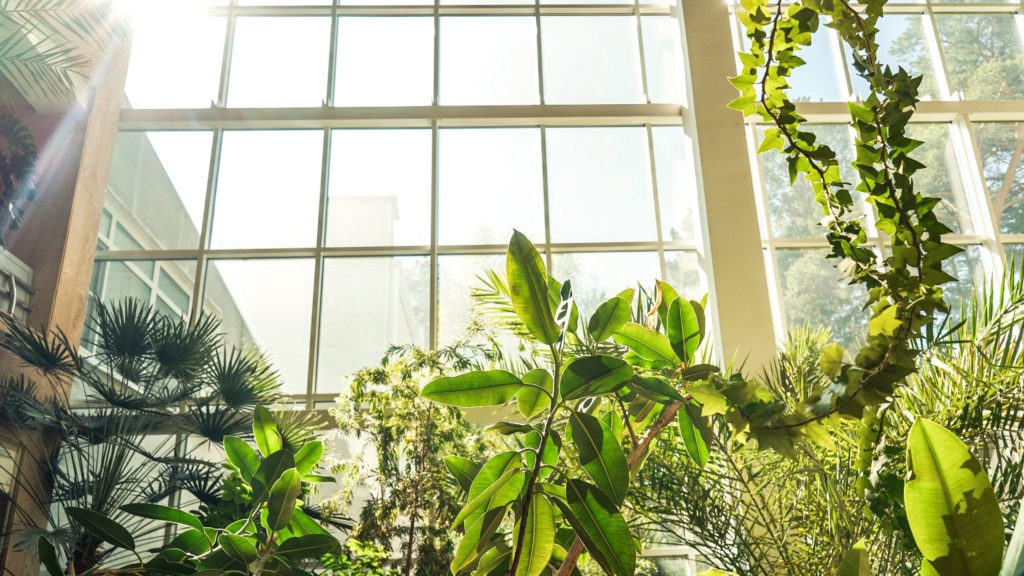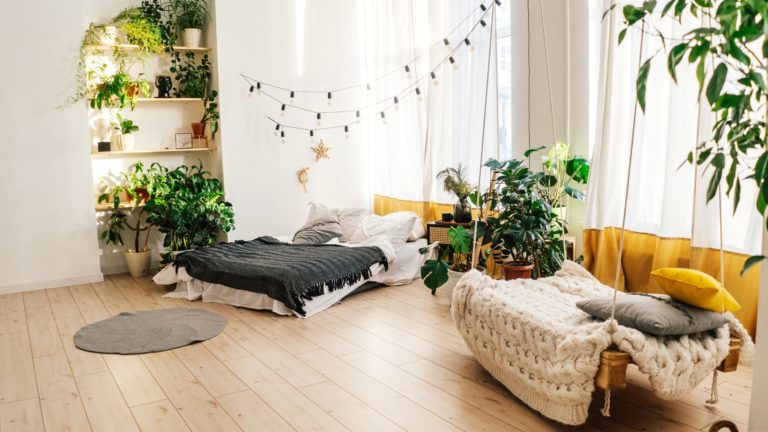The allure of plants for indoor spaces cannot be overstated. From the aesthetic beauty they bring to the oxygen they produce, these green wonders are more than just pretty ornaments; they are living, breathing entities that can transform your living space. This guide unveils the perfect plants for your indoor domain and offers expert advice to ensure they remain radiant and healthy.
The Allure of Indoor Greenery: Why Houseplants Are Essential
Houseplants serve as nature’s very own air purifiers. They absorb carbon dioxide and release oxygen, providing a fresh environment in enclosed spaces. Moreover, plants are known to boost mood, reduce stress, and even enhance concentration. By opting for plants for indoor spaces, you’re not just enhancing decor but also investing in well-being and wellness.
Size and Space: Choosing the Right Plants for Your Home
Every plant has its unique requirements and growth patterns. Before choosing, evaluate the space you have. Larger plants like fiddle leaf figs might be grand and lush, but they require ample space. On the other hand, succulents are perfect for small shelves or window sills, providing greenery without overwhelming the space.

The Radiant List: 10 Best Indoor Plants for Every Space
Indoor plants can transform an ordinary room into a lively oasis. But with so many options available, which ones should you choose? Let’s delve deeper into our curated list, showcasing the ten most versatile and radiant indoor plants suitable for varied spaces and lifestyles.
- Snake Plant (Sansevieria):
- Description: Often recognized by its tall, upright sword-like leaves with green mottled patterns.
- Benefits: Highly durable, snake plants are excellent air purifiers, known to filter out formaldehyde and benzene.
- Care Tips: They thrive in low light and can survive weeks without water, making them perfect for forgetful plant owners.
- Pothos (Epipremnum aureum):
- Description: Sporting heart-shaped leaves, pothos vines can grow long and lush.
- Benefits: A versatile plant that’s adept at purifying air, removing toxins like benzene and xylene.
- Care Tips: It can thrive in a variety of lighting conditions and requires watering when the soil feels dry.
- Spider Plant (Chlorophytum comosum):
- Description: Recognizable by its green and white striped leaves and small white flowers.
- Benefits: Another excellent air purifier, this plant removes pollutants like formaldehyde and xylene.
- Care Tips: Prefers indirect light and well-draining soil. Ensure not to overwater.
- ZZ Plant (Zamioculcas zamiifolia):
- Description: Features shiny, dark green leaves that appear almost plastic.
- Benefits: Extremely resilient and known to purify the air by removing pollutants like benzene and formaldehyde.
- Care Tips: Requires minimal light and infrequent watering.
- Peace Lily (Spathiphyllum):
- Description: This plant blooms with elegant white flowers, offering a serene aesthetic.
- Benefits: Highly effective in removing air pollutants, especially ammonia.
- Care Tips: Prefers low to medium light and should be watered when the top of the soil is dry.
- Philodendron:
- Description: With heart-shaped leaves, philodendrons are a favorite for indoor gardening.
- Benefits: Apart from being a charming addition, they help in purifying the air.
- Care Tips: Thrives in indirect light and requires watering when the soil is dry.
- Rubber Plant (Ficus elastica):
- Description: Noted for its broad, shiny, dark green leaves.
- Benefits: Acts as an efficient air cleaner, especially for formaldehyde.
- Care Tips: Prefers bright, indirect light and needs to be watered when the top layer of soil feels dry.
- Fiddle Leaf Fig (Ficus lyrata):
- Description: A statement plant with large, glossy leaves.
- Benefits: Besides its aesthetic appeal, it helps in improving indoor humidity.
- Care Tips: Requires bright, indirect light and consistent watering.
- Succulents:
- Description: These come in various shapes, sizes, and colors but are generally known for their thick, fleshy leaves.
- Benefits: Succulents are excellent for improving air quality by adding oxygen and humidity.
- Care Tips: Prefer bright light and infrequent watering, given their desert origins.
- Aloe Vera:
- Description: A succulent with long, spiky leaves containing a soothing gel.
- Benefits: Apart from its well-known skin-soothing properties, aloe vera also helps in air purification.
- Care Tips: Requires bright light and minimal watering.
These plants not only add to the visual appeal of indoor spaces but also enhance the environment by purifying the air and increasing oxygen levels. Whether you’re a seasoned green thumb or a budding plant enthusiast, there’s something in this list to suit every preference and care commitment level.
Lighting the Way: Understanding Your Plants’ Light Requirements
Not all plants for indoor spaces need abundant sunlight. While succulents and fiddle leaf figs thrive in bright, indirect light, plants like pothos and snake plant can survive in low light conditions. It’s crucial to place them according to their light preferences to ensure they flourish.
Watering Wonders: The Art of Keeping Indoor Plants Hydrated
Over-watering is a common mistake. It’s essential to understand each plant’s water needs. For instance, succulents require infrequent watering, while tropical plants like peace lilies prefer being consistently moist. Always check the soil before watering. If it’s dry an inch below the surface, it’s time to hydrate.
Soil Secrets: Ensuring the Right Nutrients for Growth
The right soil mix can make a world of difference. Specialty soils, like cactus mix for succulents or orchid mix for orchids, cater to specific plants’ nutritional needs. Regular potting soil is often suitable for most other indoor plants. Occasionally, plants might need fertilizing, especially during growth periods.
Pest Prevention: Keeping Your Plants Safe from Unwanted Visitors
Indoor plants might sometimes attract pests like aphids, spider mites, or mealybugs. Regularly check your plants for any signs of these unwelcome guests. Neem oil, insecticidal soap, or even simply wiping the leaves can help in preventing and treating infestations.
The Role of Humidity: Finding the Balance for Indoor Plants
Some tropical plants like ferns or peace lilies thrive in humid conditions. In dry environments, consider placing a humidifier near them or occasionally misting them. Placing plants together also creates a microenvironment of increased humidity.
Pruning and Propagation: Tips for Long-Lasting Beauty
Regularly removing dead or yellowing leaves keeps plants healthy. Some plants might benefit from occasional pruning to promote bushier growth. If you wish to multiply your green family, learn about propagation methods, from leaf cuttings to water propagation.
The Zen of Plant Care: Mindfulness and Connection in Everyday Gardening
Tending to plants is therapeutic. It’s a form of connection to nature and a moment of mindfulness in our busy lives. As you water, prune, or simply admire your plants, take a moment to breathe deeply and appreciate the peace they bring.
Conclusion
Choosing the perfect plants for indoor spaces is a journey of understanding, patience, and connection. As you nurture them, they, in turn, enrich your life with beauty, cleaner air, and a sense of fulfillment. Dive into this green adventure and watch as both you and your plants thrive in harmony.


